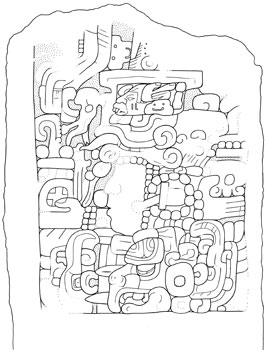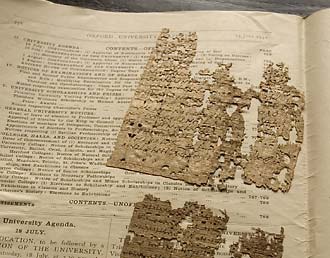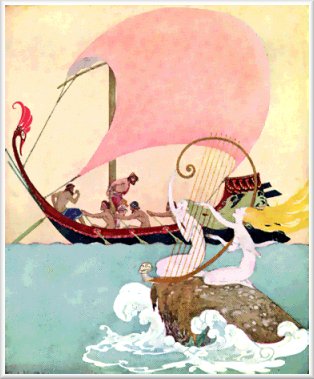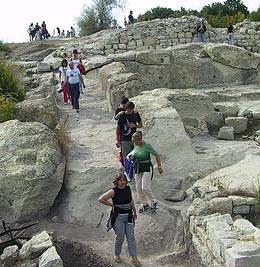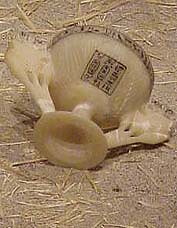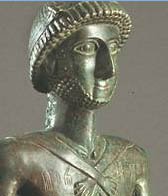"A conference will be held on the Persian Achaemenid empire from 29th of September to 1st of October in the British Museum, in conjunction with the exhibition of the ?Forgotten Empire: The World of Ancient Persia? held there from 8th of September 2005 till 8th of January 2006.
The conference is organized by the British Museum and the Iran Heritage Foundation and will discuss different issues of the Achaemenid era of Persia.
According to the website of Iran Heritage Foundation issues covered in the three-day conference include:
1. Problems with Achaemenid History - There are many unresolved issues in the history of the Achaemenid period and many areas for possible investigation. Topics that have been the focus of recent attention include the ethnicity of Cyrus, the significance of Gaumata?s rebellion, and the genealogy of Darius. Amongst subjects for future discussion might be the transition between the Median and Achaemenid periods and the apparent ease with which the empire was overthrown in 334-331 BC.
2. Kingship - In this section we will tackle royal imagery, the status of the king and religious symbolism.
3. Functions of Administration - There will be an opportunity here to discuss administrative texts, seals and sealings, coins, and other matters pertaining to administration.
4. Gender, Society and Ethnicity - In Achaemenid art representations of women are rare, but there are many references to women in the administrative texts and other sources. We hope to consider this phenomenon and look at the place of women in the Achaemenid court and in society, as well as looking at other socio-economic groups that may not feature largely in the exhibition.
5. Religion and Burial - Whether the Achaemenid kings were Zoroastrians, or whether they were simply believers in Ahuramazda, or whether they respected various gods, are still subjects that are hotly debated. Some scholars point to the various gods listed in the Elamite tablets from Persepolis, while others believe that important clues can be found in the religious ceremonies listed in the archives. Equally enigmatic is the diversity of burial customs attested in the Achaemenid Empire, none of which conform to orthodox Zoroastrian practice.
6. Army - In building and maintaining one of the largest empires in antiquity, the Persian army (and to a lesser extent the navy) played a key role. There have been a number of recent studies on these subjects and the conference will present an opportunity to review the current state of research.
7. Empire - There will be scope here to discuss the history, art and archaeology of outlying parts of the Empire.
8. Art and Material Culture - Papers will be welcomed on all aspects of Achaemenid art such as the reliefs and glazed brick decoration and on groups of small finds such as the controversial discoveries at Kalma-kareh.
9. Interface between Persia and Greece - This would be a particularly appropriate subject for discussion in the British Museum where it will be possible to contrast the objects in the special exhibition with the extensive collection of sculpture from Asia Minor (particularly Xanthos and Halicarnassus) and from Greece itself (notably the Parthenon). Subjects for discussion might include cultural interaction and biased Greek perceptions of Persia that still persist in the west.
10. Power and Politics - The Persian Empire is often characterised as being tyrannical and despotic in contrast to enlightened western-style democracy. It would be interesting to take a fresh look at this traditional stereotype particularly in the light of recent events in the Middle East.
11. Legacy - A good deal has been written about the ?discovery? of Ancient Persia by western travellers and we would like to redress the balance by concentrating on the continuation of the tradition in Parthian and Sasanian times and in Islamic period sources, and on the revival in the Qajar and Pahlavi periods.
The conference is held simultaneously with the largest ever exhibition on the Achaemenid era held form 8th of September 2005 to 8th of January 2006 in the British Museum, entitled ?Forgotten Empire: The World of Ancient Persia?. The items to be showcased in the exhibition include some of the finest pieces from the collections of The National Museum of Iran, many of which have not been seen outside Tehran before, as well as key pieces from the Louvre in Paris, the Vorderasiatisches (Ancient Near East Antiquities) Museum in Berlin and the British Museum?s own significant collections.
The conference committee is calling for papers on the 11 themes proposed above, and the prospective speakers are to send a 250-300 word abstract by 15th of May 2005."
If you enjoyed this post, never miss out on future posts by following me by email!






